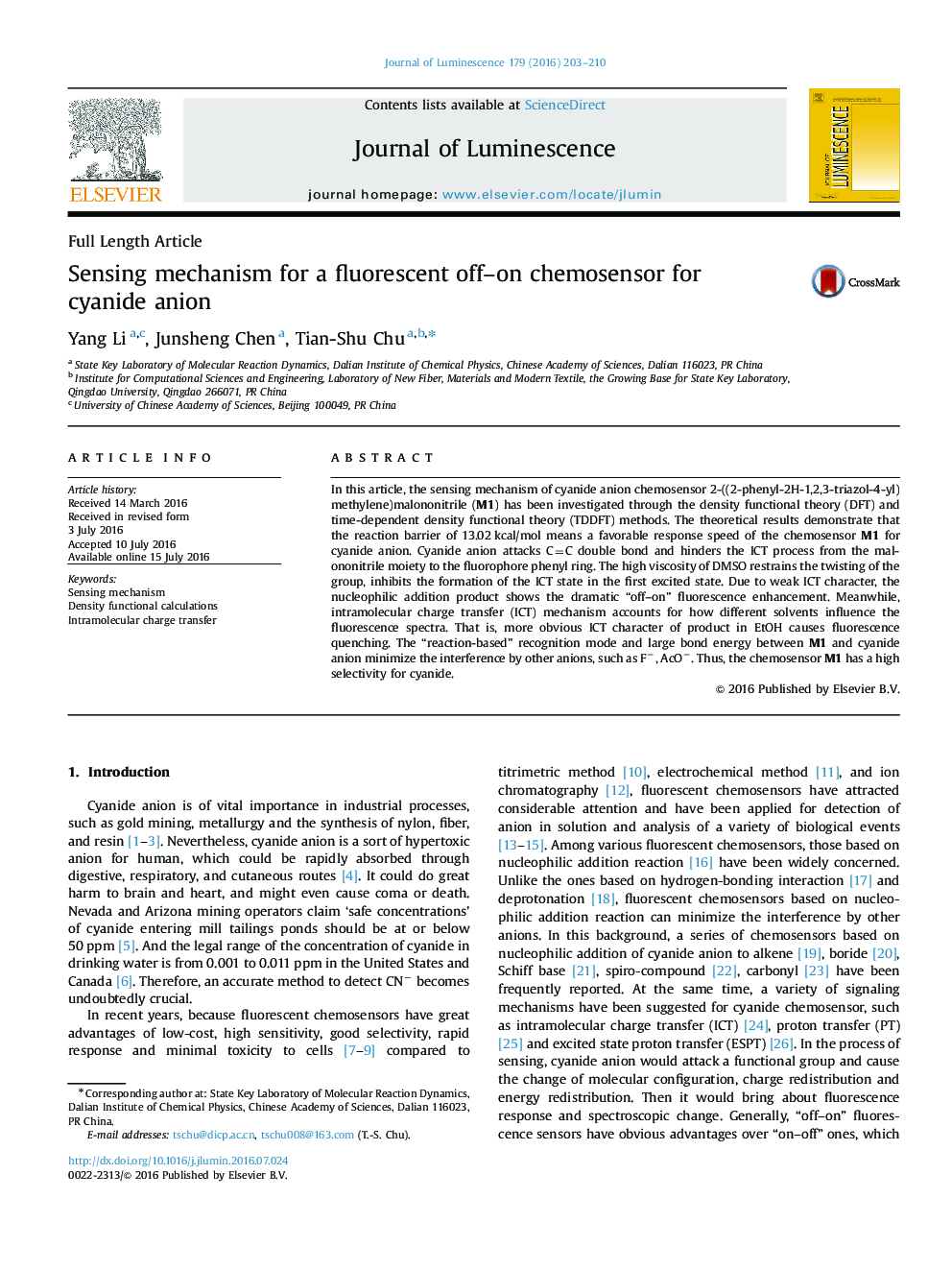| Article ID | Journal | Published Year | Pages | File Type |
|---|---|---|---|---|
| 5398315 | Journal of Luminescence | 2016 | 8 Pages |
Abstract
In this article, the sensing mechanism of cyanide anion chemosensor 2-((2-phenyl-2H-1,2,3-triazol-4-yl)methylene)malononitrile (M1) has been investigated through the density functional theory (DFT) and time-dependent density functional theory (TDDFT) methods. The theoretical results demonstrate that the reaction barrier of 13.02Â kcal/mol means a favorable response speed of the chemosensor M1 for cyanide anion. Cyanide anion attacks C=C double bond and hinders the ICT process from the malononitrile moiety to the fluorophore phenyl ring. The high viscosity of DMSO restrains the twisting of the group, inhibits the formation of the ICT state in the first excited state. Due to weak ICT character, the nucleophilic addition product shows the dramatic “off-on” fluorescence enhancement. Meanwhile, intramolecular charge transfer (ICT) mechanism accounts for how different solvents influence the fluorescence spectra. That is, more obvious ICT character of product in EtOH causes fluorescence quenching. The “reaction-based” recognition mode and large bond energy between M1 and cyanide anion minimize the interference by other anions, such as Fâ, AcOâ. Thus, the chemosensor M1 has a high selectivity for cyanide.
Related Topics
Physical Sciences and Engineering
Chemistry
Physical and Theoretical Chemistry
Authors
Yang Li, Junsheng Chen, Tian-Shu Chu,
